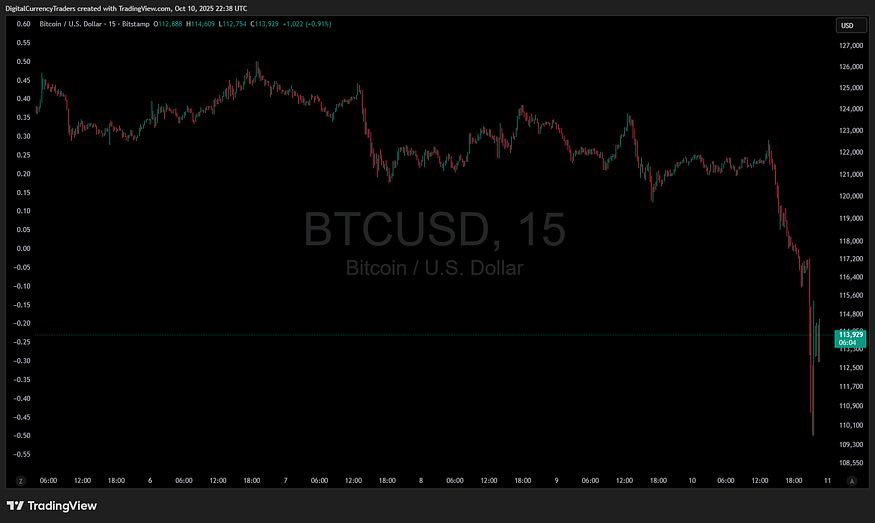Author: AltSeason CoPilot; Compiler: Vernacular Blockchain
President Trump abruptly announced an additional 100% tariff on all Chinese imports, effective November 1, 2025. The news sent shockwaves through global markets, leading to one of the worst single-day sell-offs in stocks, cryptocurrencies, and commodities this year.
This isn't a policy tweak, but a global reset underway.

DOGE's price plummeted 65%. Market-crushing tariffs Trump’s new tariffs double existing import duties, bringing the total tariffs on Chinese goods to about 130%. The escalation came after Beijing imposed export controls on rare earth minerals and new port fees on American ships, both seen as strategic countermeasures in an increasingly intensified economic standoff. Trump responded not only with tariffs but also with export controls on all critical software and hinted at canceling a planned meeting with President Xi Jinping. The timing? Brutal. The impact? Immediate. Market Crash: $1.6 Trillion Wiped from Stocks Dow: -1.05% (-878 points) S&P 500: -2.7% Nasdaq: -3.5% — Worst Day Since April 2025 About $1.65 trillion in market capitalization was wiped out in hours as traders rushed for the exits.
Tech stocks bore the brunt of the impact: AMD shares fell 5.7%, Nvidia plummeted, and sentiment in the semiconductor sector collapsed on concerns that supply chains between the world's two largest economies would freeze.
Bitcoin fell along with cryptocurrencies
Cryptocurrencies were not immune.

In the hours following the announcement:
Bitcoin fell 10%, from $122,000 to $107,000
Ethereum, XRP, and BNB fell more than 15%
Roughly $200 billion in crypto market capitalization was wiped out
The sell-off highlights how digital assets remain highly correlated with broader risk sentiment, and how macro shocks can trigger synchronized liquidations in both traditional and crypto markets. The broader context: The return of fear The escalation comes against an already fragile backdrop: Fears of a U.S. government shutdown linger. Inflation anxieties remain elevated as commodity and transportation costs rise. Global supply chains are once again at risk—a repeat of the chaos of 2018, but on a grander scale. Analysts warn that if China retaliates with further restrictions on rare earths, semiconductors, or dollar-based trade, markets could face a prolonged “stagflation shock”—slower economic growth, higher prices, and continued volatility. What This Means for Investors This is a macro turning point. Here are some strategic considerations: Short-Term: Expect volatility to rise sharply—both stocks and cryptocurrencies could see multi-day corrections. Medium-Term: Watch for safe-haven flows—demand for gold, cash, and U.S. Treasuries could surge. Long-Term: If this trade standoff persists, supply chain inflation could reignite interest in "hard assets" like gold and Bitcoin. Ironically, tariffs intended to bolster U.S. competitiveness may ultimately enhance the appeal of decentralized stores of value. The Last Window of Opportunity The market's message is clear: the trade war is back—and this time, it's all-out.
Gold is soaring. Bitcoin is bleeding. Stock markets are collapsing.
As capital scrambles for safety, one thing is certain—the next phase of global finance will be less about growth and more about survival, positioning, and timing.
The question facing every investor is: are you reacting to the headlines, or are you preparing for the ripple effects?
 Anais
Anais




